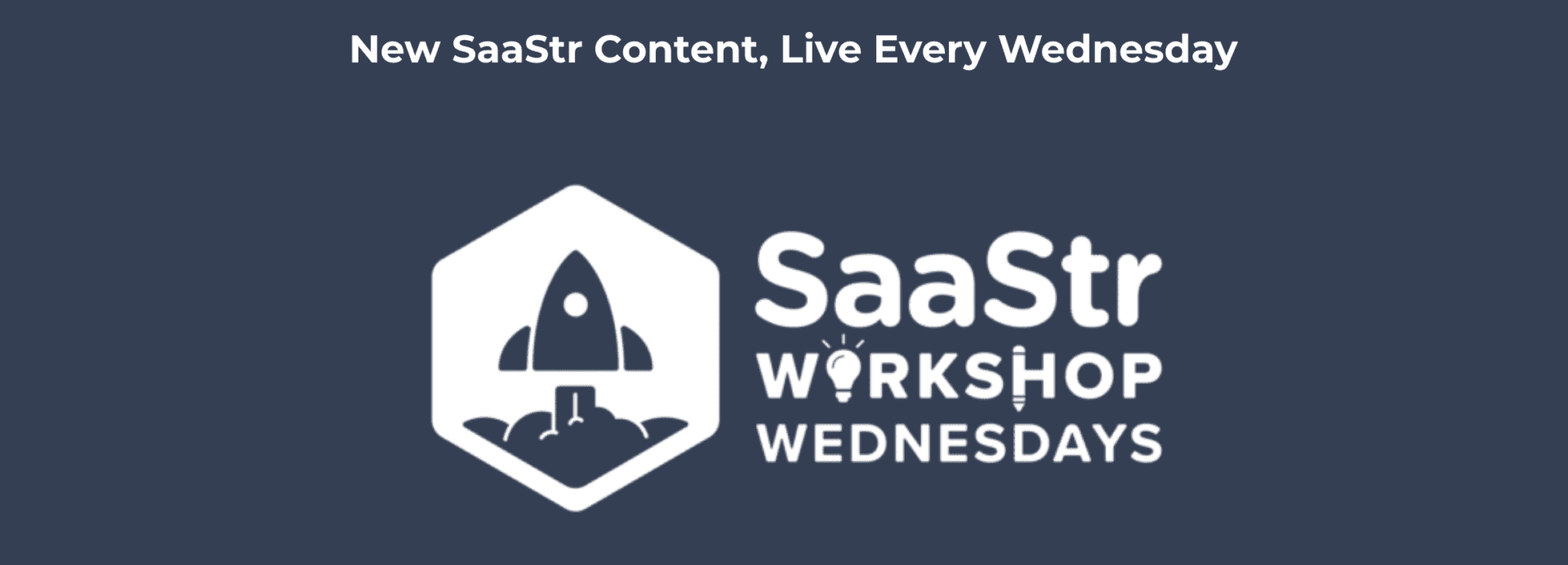Metrics are the key to evaluating success and setting goals, but not every SaaS business should orient itself around the same one-size-fits-all numbers. In an insightful SaaStr workshop, Battery Ventures Principal Brandon Gleklen shares how the views on SaaS metrics are changing and considerations for measuring success continue to shift in today’s landscape.
The Evolution of Language For SaaS Business
In 2022, founders and investors must be ready to pivot strategy at any moment. For many, it’s proven to be a year of growth and resiliency. As Gleklen points out, he is impressed with the agility he sees in SaaS leaders when the market is less predictable: “I think the speed in which people have been able to move and adjust has been awesome to see.”
This flexible mindset creates just the right conditions for embracing evolving business models and new metrics. After all, it wasn’t so long ago that SaaS metrics gained respect and popularity in the industry. A general understanding of the SaaS business model grew as the SaaS sector matured. This understanding started a shift from GAAP metrics (Revenue, Gross Profit, EBITDA) to SaaS metrics (ARR, NDR, LTV, CAC, etc.) as a common language to analyze a cloud business.
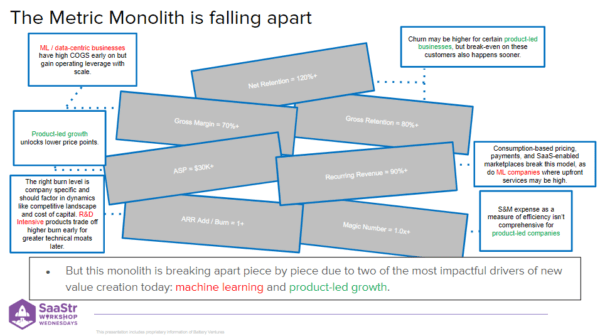
The Metric Monolith: The Rise and Fall
The shift to using SaaS metrics as a common language led to a common definition of what a great cloud business should look like. This can be thought of as the metric monolith, and historically, VCs would memorize and make decisions based on these thresholds:
- Net Retention = 120% +
- Gross Margin = 70% +
- Gross Retention = 90% +
- ASP = $30K +
- Recurring Revenue = 90% +
- ARR Add/Burn = 1 +
- Magic Number =1.0x +
However, it’s growing more apparent in recent years that this monolith does not accurately measure every company’s growth and efficiency. As Gleklen says, “We actually see this monolith falling apart, and it’s falling apart primarily due to what we view as two of the biggest drivers for value creation today: Machine learning and product-led growth.”
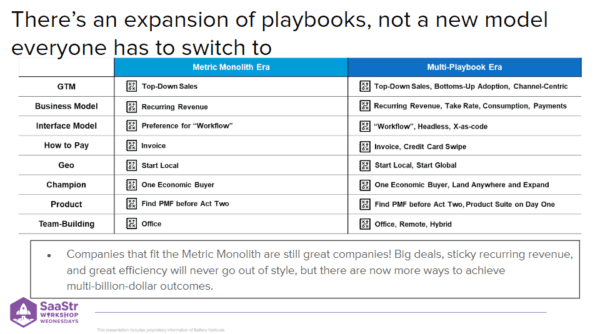
These two drivers influence varying metrics in different ways that don’t necessarily negatively impact cloud business outcomes. For example, data-centric and machine-learning businesses have high COGS early on, but they gain operating leverage at scale. Burn levels are not one-size-fits-all –– R&D-intensive products trade off higher burn early for greater technical moats later. Product-led growth companies unlock lower price points, and sales & marketing expense may not be comprehensive for this type of business.
The Transition from SaaS Metrics to Cohort Economics
So, where should cloud businesses go from here? Should SaaS metrics be abandoned altogether?
The answer is no –– companies that do fit the metric monolith are still excellent, and these indicators remain helpful for leadership and investors. However, now there is an expansion of playbooks for SaaS, not another new model that requires everyone to follow it. Large deals, sticky recurring revenue, and high efficiency will always be in style, but now there are more ways to achieve multi-billion dollar outcomes.
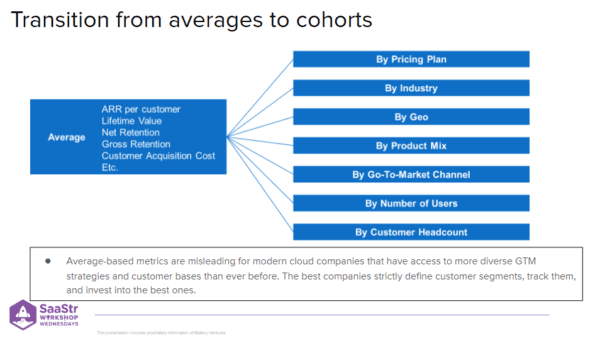
To evolve your playbook and get the clearest insight, it might be wise to transition from focusing on averages to following cohorts. Average-based metrics are misleading for modern cloud companies with access to more diverse GTM strategies and customer bases. Instead, the best companies strictly define their segments, track them, and invest in the best ones.
- Cohorts by Customer Type: Different customer sets behave differently, and averaging metrics like retention across all segments can be misleading.
- Cohorted LTV (“Realized LTV”): Instead of thinking about LTV in averages, “Realized LTV” drills into the gross profit contributions of each customer by cohort.
- Cohorted CAC Payback: Rather than focus on assumptions or averages, cohorted CAC payback considers a company’s unit economics at a specific cohort level. This is important for unit efficiency.
- SaaS Subscriptions as Annuities: It’s common to consider subscription contracts as annuities with an upfront cost. However, bottoms-up selling creates annuities that may look different but still have compelling economics.
- ARR per Employee (APE): This metric is the north star of efficiency in today’s competitive fundraising climate:
APE = ARR / Total Number of Employees
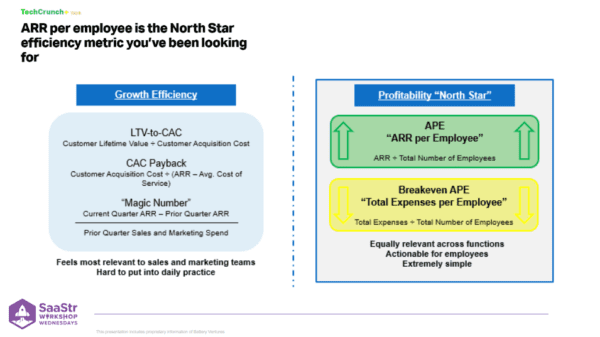
Key Takeaways
- The unpredictable 2022 market requires resiliency and a flexible mindset.
- The former SaaS metric monolith no longer applies to every company. Instead, it’s a good idea to focus on cohort economics.
- Efficiency is critical in today’s market. Use the APE formula to measure profitability and efficiency.

